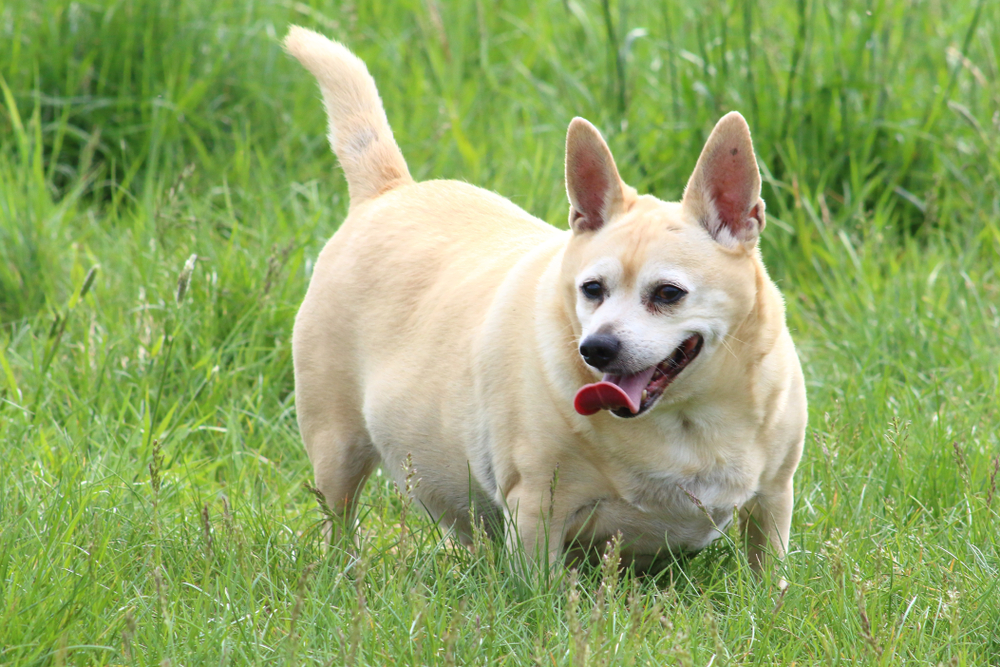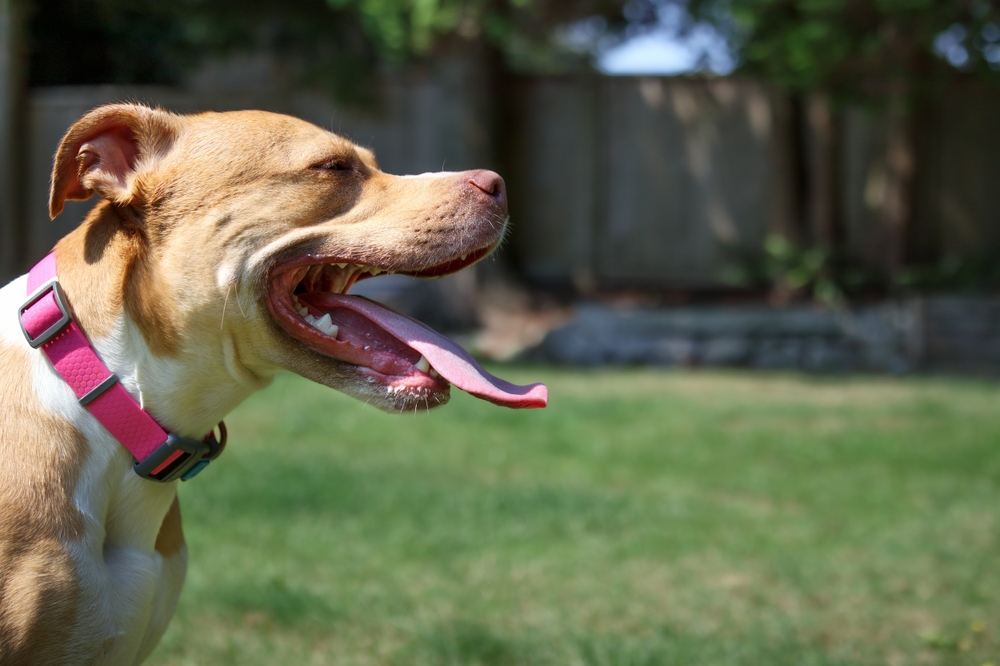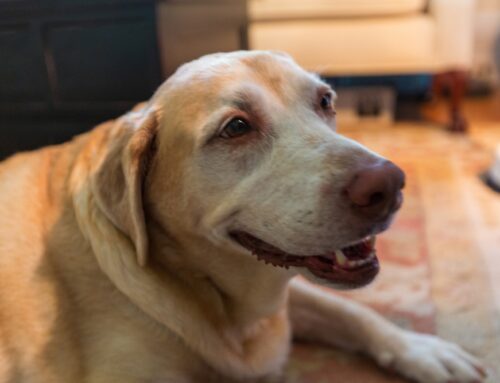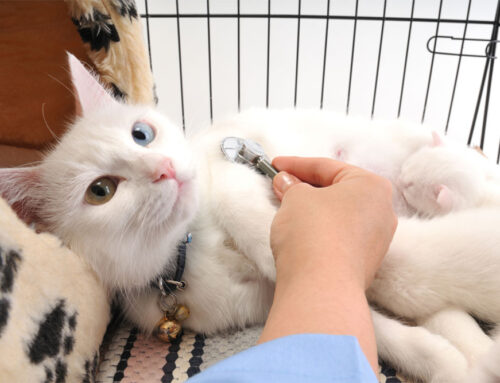Panting is normal behavior in dogs, occurring for physiologic and behavioral reasons. However, excessive panting can sometimes indicate a health issue that requires attention. Understanding why dogs pant can help determine when panting is normal and when you should be concerned. Our Valley Center Veterinary Clinic team lists reasons why dogs pant and when to seek veterinary care for your canine companion.
1. Dogs pant to cool off
Unlike people, dogs don’t sweat through their skin, they sweat only a minuscule amount through their paw pads and primarily cool down by panting. When a dog pants, water evaporates from the airways, helping to dissipate heat. Panting to cool down can occur in hot or humid environments or in response to physical exertion. Panting stops once a pet returns to a cool environment or has rested after exercise.
2. Dogs with heatstroke pant excessively
Excessive panting is a dog’s early heatstroke sign. Heatstroke occurs when dogs are exposed to high temperatures or high humidity, which diminishes their panting’s efficiency and can raise their body temperature above normal. Any dog can fall victim, but overweight dogs, dogs with short noses, and dogs with certain medical conditions have the highest risk. Other heatstroke signs that may accompany extreme panting include drooling, lethargy, vomiting, weakness, fast heart rate, red gums, or collapse. Heatstroke is a life-threatening emergency.
3. Dogs pant when stressed, anxious, or excited
Dogs often pant when they are anxious, stressed, or excited. This panting is usually accompanied by whining or other vocalizations. If anxiety or stress is the cause, dogs may also pace, drool, refuse to eat, or hide. Situations that might induce panting include thunderstorms, fireworks, car rides, vet visits, and meeting new people or dogs.
4. Dogs pant when in pain
Panting can be a sign that your dog is in pain or is feeling discomfort. Pain can arise from acute and chronic conditions and may be challenging to identify in stoic pets. Possible pain causes that aren’t always apparent include arthritis, degenerative disc disease, stomach upset, and dental disease. Panting caused by pain may be accompanied by other signs such as tensing when the painful area is touched, decreased activity, and apparent irritability.
5. Dogs with heart or respiratory conditions pant
Conditions that affect the heart and respiratory system, such as pneumonia, bronchitis, tracheal collapse, or heart failure, can cause a rapid breathing rate that is similar to panting. Dogs with these conditions may struggle to get the oxygen their body needs to function, leading to increased panting, especially during exertion or excitement. Dogs with these conditions may also suffer from coughing, lethargy, or fluid buildup in the abdomen or legs.
6. Dogs with endocrine disorders pant
Endocrine diseases are caused by hormonal imbalances, which can lead various body systems to malfunction. Examples include Cushing’s disease, which causes excess cortisol, and hypothyroidism, which causes low thyroid hormone. These diseases alter a dog’s metabolism and cause them to pant excessively during exertion and rest. Most endocrine diseases also cause weight changes, appetite and thirst alterations, and hair or skin problems.
7. Medications and toxins may cause dogs to pant
Panting may be a side effect of certain medications. For example, prednisone can mimic Cushing’s disease’s effects and cause dogs to pant more. Additionally, ingesting toxic substances or foods can lead to panting as the body reacts to the toxin. Chocolate and coffee, for example, are stimulants that affect dogs by increasing their body temperature which subsequently increases their panting.
8. Overweight dogs pant

Overweight dogs may suffer from respiratory diseases or difficulty regulating their body temperature, which is attributable to excess body fat. These dogs may pant after even slight activity as they become exerted more easily. Managing your dog’s weight through a balanced diet and regular exercise can help prevent them from panting excessively.
Excessive or inappropriate panting can indicate that your dog has an underlying physical or behavioral health issue. If you notice frequent or excessive panting not associated with heat, exertion, stress, or excitement, or panting that doesn’t resolve when the inciting cause is removed, contact the Valley Center Veterinary Clinic team to schedule an appointment to investigate the cause. For suspected heatstroke, toxin ingestion, difficulty breathing, blue or pale gum color, or collapse, seek emergency care with our team or at your nearest emergency clinic as soon as possible.







Leave A Comment